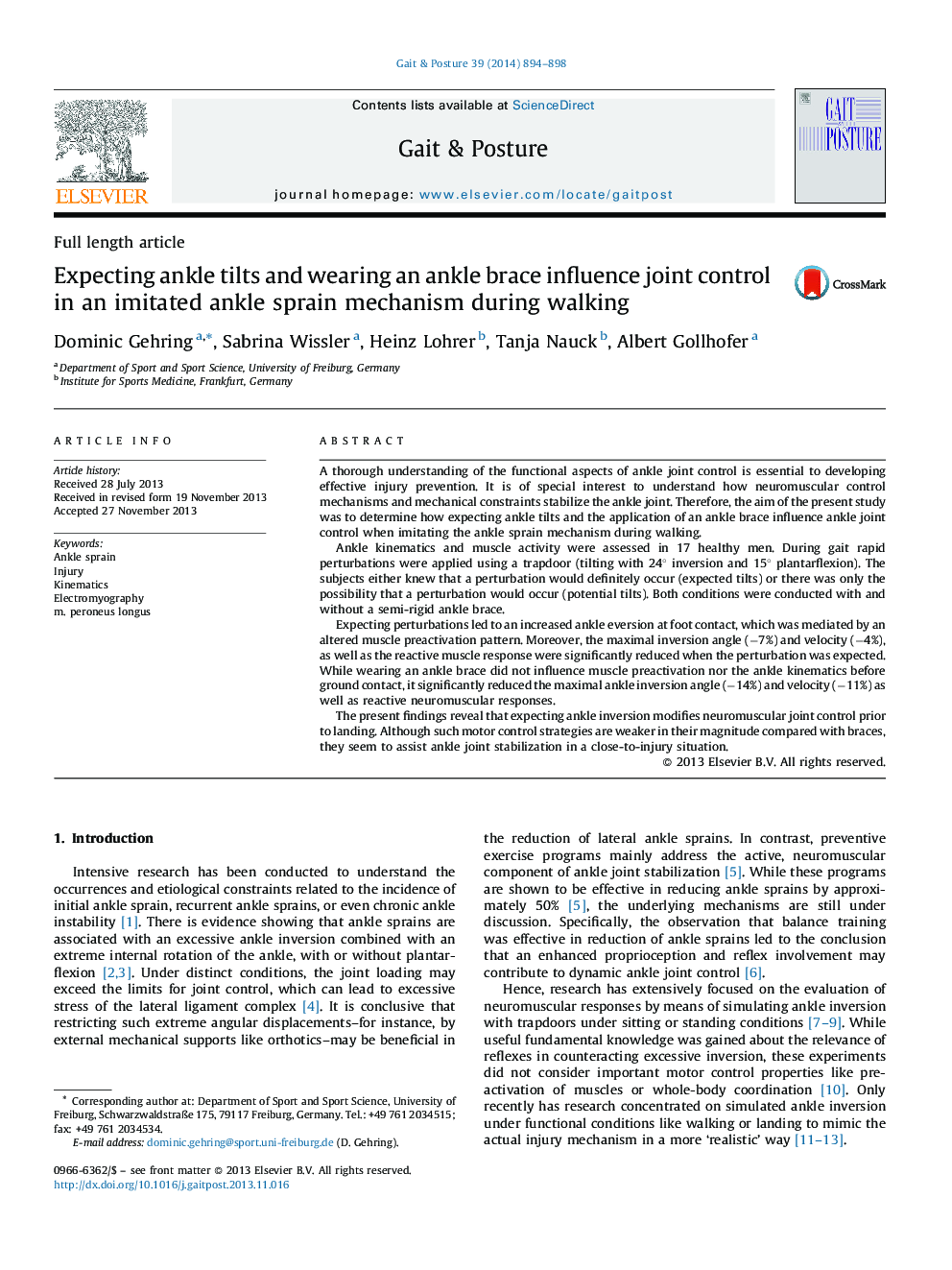| کد مقاله | کد نشریه | سال انتشار | مقاله انگلیسی | نسخه تمام متن |
|---|---|---|---|---|
| 6206563 | 1265648 | 2014 | 5 صفحه PDF | دانلود رایگان |
- We studied rapid ankle inversion in walking subjects.
- We evaluated the effects of expectation and brace on neuromuscular joint control.
- Both expecting upcoming perturbation and brace application were able to stabilize the ankle joint.
- Expecting an upcoming ankle tilt led to adaptations in feedforward muscle activation.
- Expecting critical loading scenarios may be important for injury prevention.
A thorough understanding of the functional aspects of ankle joint control is essential to developing effective injury prevention. It is of special interest to understand how neuromuscular control mechanisms and mechanical constraints stabilize the ankle joint. Therefore, the aim of the present study was to determine how expecting ankle tilts and the application of an ankle brace influence ankle joint control when imitating the ankle sprain mechanism during walking.Ankle kinematics and muscle activity were assessed in 17 healthy men. During gait rapid perturbations were applied using a trapdoor (tilting with 24° inversion and 15° plantarflexion). The subjects either knew that a perturbation would definitely occur (expected tilts) or there was only the possibility that a perturbation would occur (potential tilts). Both conditions were conducted with and without a semi-rigid ankle brace.Expecting perturbations led to an increased ankle eversion at foot contact, which was mediated by an altered muscle preactivation pattern. Moreover, the maximal inversion angle (â7%) and velocity (â4%), as well as the reactive muscle response were significantly reduced when the perturbation was expected. While wearing an ankle brace did not influence muscle preactivation nor the ankle kinematics before ground contact, it significantly reduced the maximal ankle inversion angle (â14%) and velocity (â11%) as well as reactive neuromuscular responses.The present findings reveal that expecting ankle inversion modifies neuromuscular joint control prior to landing. Although such motor control strategies are weaker in their magnitude compared with braces, they seem to assist ankle joint stabilization in a close-to-injury situation.
Journal: Gait & Posture - Volume 39, Issue 3, March 2014, Pages 894-898
